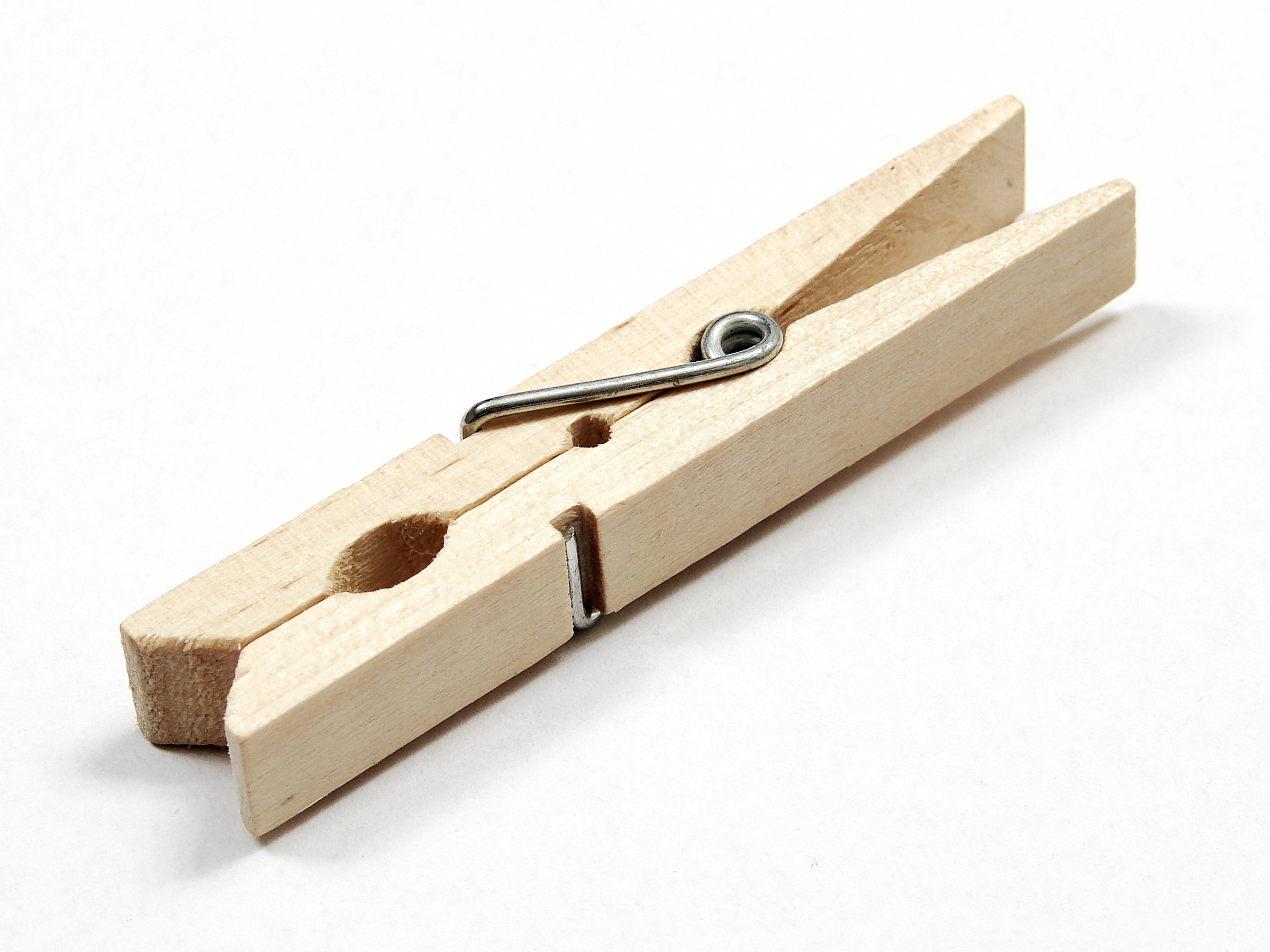Know Your Film Jargon: The (Questionable) True Story of the C-47
It’s your first time on a movie set. You’re nervous, excited. You watch impressed as more than a hundred crew members scurry to set up a shot that’ll probably last no more than 5 seconds in the final film.
Then, someone turns and asks you for a C-47.
Not wanting to reveal your inexperience, you nod knowingly and begin a frantic search around the set. C-47…Sounds important. Maybe it’s a type of light? Or a camera filter? Then again, C-47 sounds vaguely electrical – maybe it’s a cable?
Nope. It’s one of these:
One of the great things about film production is the slang, much of which dates back to the early days of Hollywood. Spend enough time on a set, and you’ll hear dozens mysterious terms: jokers, hot bricks, redheads, stingers, sticks, the martini, the Abby Singer, cookies…
My favorite is the slang for a simple wooden clothespin – C-47 (also known as 47’s, CP47’s, bullets, ammo, and pegs).
I was indeed asked for a C-47 on one of my first film shoots (by someone I suspect was just trying to make me look dumb). I spent a solid ten minutes pretending to know what I was looking for before someone finally reached into a cloth bag and pulled out a handful of simple, ordinary clothespins.
Why is it called C-47? There are a bunch of stories, all of which are probably apocryphal. One has it that C-47 refers to an extremely versatile type of military plane used during World War II. Because clothespins are also versatile in film production, they were honored with the name by returning servicemen.
Another story goes that C-47 was simply a catalog number for a bag of clothespins (or in an alternate version, a World War II requisition number). A third is that a particular movie studio stored clothespins in a bin marked C-47, and the name just stuck. A fourth: the patent number.
The REAL story (at least, the first version I ever heard and my favorite of the bunch) is that back in the early days of Hollywood, studio heads auditing equipment requests from lighting departments would go crazy over the idea of spending good money for something as simple and mundane as clothespins. Hence, “clothespin” was quietly changed to the far more impressive-sounding C-47, and all requests were immediately approved by clueless execs.
One final version: it was actually to avoid the IRS, who would not consider clothespins to be work-related expenses (but had no problem with C-47’s).
-SCOUT
PS – Feeling creative? Flip the spring on a clothespin to turn into a pair of wooden tweezers, and you’ve got a C-74!
PPS – Bored on set? Play the amusing game of trying to clip as many C-47’s to a person’s shirt as possible without them noticing.










My old cinematography teacher (South African by the name of Koos Roets) told us how on his first job (on Zulu, I think it was) he was sent to find ‘a bucket of sprockets’ … which, of course, are the holes on the side of a strip of film. Similarly, he looked for ages before admitting he didn’t know what he was looking for. Of course, in this case the request was entirely for the amusement of the senior camera crew!
My film professor would tell us that it’s not uncommon to be asked to “grab a box of f-stops” or a “rig up a skyhook” on location. Thank goodness for our profs for keeping us out of those embarrassing situations! 😉
Ah, the good old party game. Although one party’s we usually use just one pin. And add a penalty for being noticed.
And of course, there are always four sides to every story. Yours, theirs, the truth. And what really happened. Probably applies to these origin stories as well. 😉
I always heard the one about it being a catalog number from a manufacturer.
On my first job, I got sent to the truck to bring back a vice-grip. I came back with a 24″ furniture clamp. D’oh!
I am gonna use that on on someone for sure, well, one day maybe, when I need someone to fetch a clothes peg, lol.
Having worked in the film industry for 20 years, I love all the film lingo. My favorite story (also probably apocryphal) is the story of how “Craft services” got their name. Supposedly, no lesser talent than Alfred Hitchcock so enjoyed the food on one of his films that he said to the chef, “Sir, you are a credit to your craft!” or something like that.
Actually, back in the day, the carpenters were the first to arrive on set (to build it) and they always brought coffee and doughnuts or pastries. They would leave whatever was left over for the other crew members. Since they were then called “the craft department ” the food was referred to as Craft Service.
At least that’s the story I was told.
for a second I thought you were going to entertain us with an anecdote on how you had to quickly go acquire a C-47 transport plane for the shoot.
Having worked in aviation for 21 years, my immediate thoughts also were “that’s an Douglas DC3.”
ReddHee1,
Craft Service comes from the fact that the job consisted of “servicing the crafts”, i.e. grip, electric, etc. They were considered an extra pair of hands who could float to any department when they needed help — pulling cable, booming a second mic, helping haul lumber — whatever. Getting coffee was just something they did when they weren’t busy with everything else, but eventually, everybody decided the coffee was the most important part of the job. It’s still a union position in L.A. and it shows up in the Grip section (Set Operations) of most budgets.
Bored on set? Play the amusing game of trying to clip as many C-47′s to a person’s shirt as possible without them noticing.
A British man set a world record a few years ago by attaching 153 “C-47’s” to his face.
One of the terms I remember from working on shoots was a “Big Ben” … I think it was a big chunk of machined metal with a swivel for lighting… boy that was a while ago.
And this is what happens when you use several thousands C-47s all at once:
GerryStecca.com
I love the layer on the trees! It is both natural and highly structured at the same time. I love it!
Good discussion about the origin of film terms. I remember one of my first days on set as a P.A., and someone asked me to go to the “honeywagons” and look for the “first team.” I figured the honeywagons must be where they served the food so I went over to the catering truck and asked if it was the honeywagon. After the laughter subsided I found out it was the bathroom trailers, and that the ‘first team’ were the main actors (the second team being the stand-ins). This experience inspired me to write the A to Z Guide to Film Terms over 15 years ago.
Hard to tell which came first but these clothespins actually DO go by the part number (04700) at this company:
http://www.wayfair.com/Household-Essentials-Whitney-Design-Wood-Clothespin-Set-of-50-04700-HUU1345.html
I’ll bet you that those “Wood Clothespin”s are really made of bamboo.
Look at the end grain.
“bored on set”? If you’re NOT bored on set, you’re probably NOT ON SET!!! 😉
Film work: the most boring job you’ll ever love.
Seriously, though; spending 12+ hours a day on set can get boring, but it’s kinda like the bumper stickers say: A bad day on set beats a good day in the office!
I often wonder if the expression “hurry up and wait” was coined on set
Nathan, I didn’t know that about Craft! However, I have to agree about coffee being the most important part of their job. Coffee and bagels. If the Bagel Industry ever collapsed, the entire Film Industry would collapse right behind it. Not sure why, but there are ALWAYS bagels and coffee.
Haha c47s are one of my favorite terms too. Btw target has them particularly cheap for all if the filmmakers out there and these guys give them away for free apparently: http://www.makeriff.com/#!we-donate-c47s/cfa8